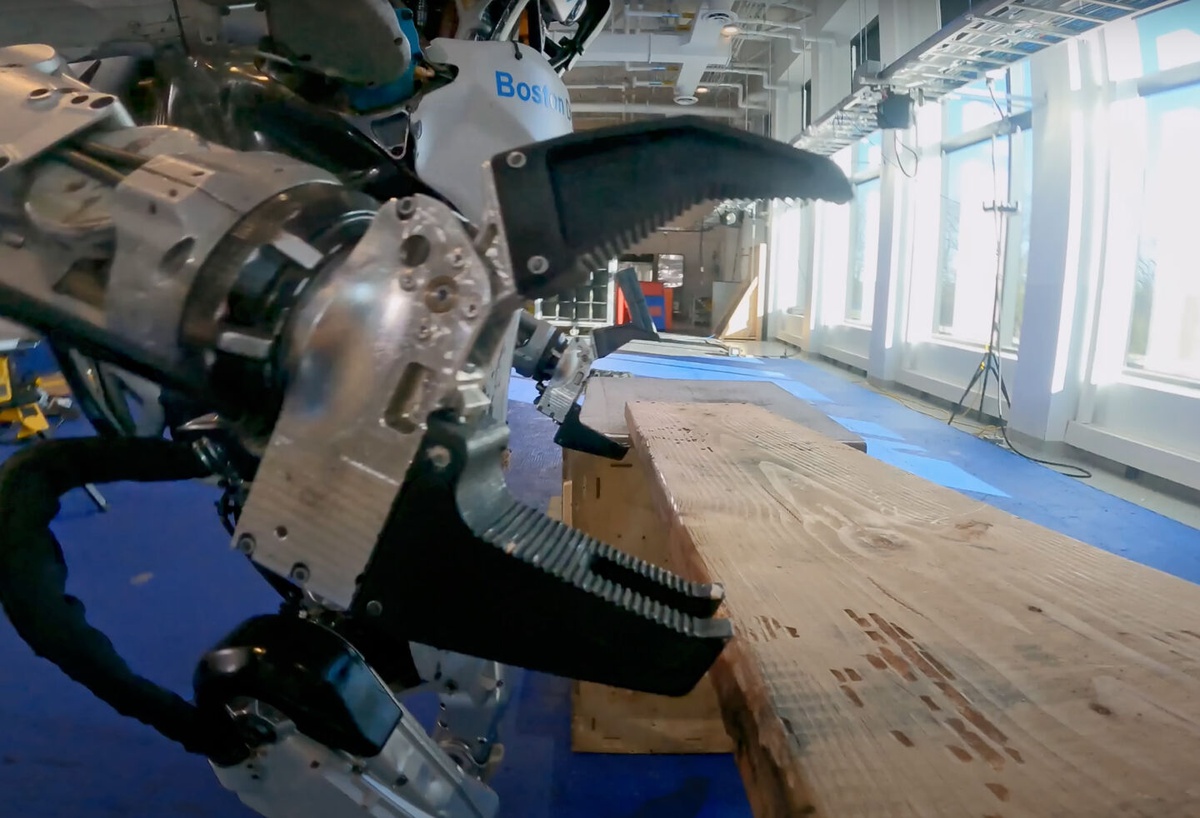Boston Dynamics' Atlas, the world's most advanced humanoid robot, is back, now capable of moving medium-weight car parts. While it has mastered bipedal tricks like walking, running, jumping, and even backflips, it's still in the early stages of object manipulation. In a previous demonstration, Atlas used rudimentary hand clamps to carry heavy objects like a toolbox, barbells, and a plank of wood. The focus now appears to be on "kinetically challenging" tasks, which require additional calculations and planning to maintain balance and prevent falls.
In the latest video, we're moving on to what seems like "phase 2" of picking things up – being more precise. The previous clamp hands had a single pivot at the palm and would apply maximum grip strength to anything the robot lifted. However, even delicate objects like a wooden plank would be damaged. The new hands on Atlas appear to be more gentle. Each hand has three fingers with two joints. All fingers share a big pivot point at the palm and have a knuckle joint halfway up. They are long, flexible in both directions, and can wrap around objects instead of crushing them.
Atlas picks up a set of car struts—a complex object weighing around 13 kilograms. The robot performs a two-handed lift, carefully placing the strut from a vertical position on a pallet onto a shelf. Boston Dynamics' lab provides a challenging manipulation environment, with the strut's intricate shape making gripping tricky. Additionally, the presence of tall metal poles around the strut box requires careful maneuvering to avoid collisions. The shelf's tight fit demands precise placement to prevent the strut's protrusions from hitting it.
One limitation here is that some of the smarts in the video are pre-calculated. For example, we see what appears to be Atlas' vision processing, which already has a perfect 3D scan of the car strut. This suggests that Atlas either has prior knowledge of the strut from all angles or was pre-programmed with topographical data for this specific model. In any case, Atlas is saved from the challenge of figuring out the object's shape in real time. With its lidar sensor and point cloud generation, Atlas simply needs to align the pre-baked model with the point cloud to have a complete understanding of the strut's topography. Handling an object that Atlas has never seen before would present a higher level of difficulty, but breaking down the challenges into smaller parts is a good starting point.


Boston Dynamics’ Atlas
When Atlas picks up a strut, it walks around a pallet, showcasing its exceptional bipedal movement. While a simpler approach would involve straight-line walking paths with pivots, Atlas' path-planning is more complex. It incorporates advanced side-step moves, leaning into turns, and dynamically stumbling around the pallet. This version of Atlas moves less like a robot and more like a drunk person, which is a huge compliment. At one point, it even stumbles and recovers, drawing an excited reaction from onlookers in the background.
Source: Arstechnica

